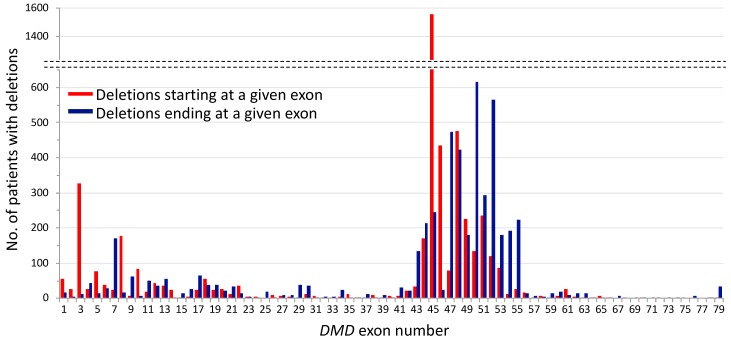Figure 1.
DMD hot spots of deletion mutations in the proximal (exons 1–22) and distal (exons 43–55) regions. The two hot spots were found using data from 4929 patients in the LOVD database (as of 22 June 2018) who harbor deletions starting or ending at a given exon; for example, the deletions of exons 45–XX such as exons 45–50 and 45–52 fall into the group of “deletions starting at a given exon” shown in red; exons XX–50 deletions such as exons 48–50 and 49–50 deletions come into the group of “deletions ending at a given exon” in blue. Individual deletion patterns found in the proximal and distal hot spots account for 0.5–6.6% and 2.7–12.5% of all the deletions, respectively; others account for less than 0.5%, except deletions involving exons 29, 30, 41, 61 and 79. Only deletions identified by Multiplex Ligation-dependent Probe Amplification (MLPA), Multiplex Amplifiable Probe Hybridization (MAPH), Array Comparative Genomic Hybridization (array CGH), Next Generation Sequencing (NGS), or a combination of multiplex PCR and Southern blotting were analyzed.

